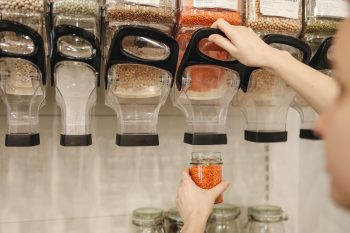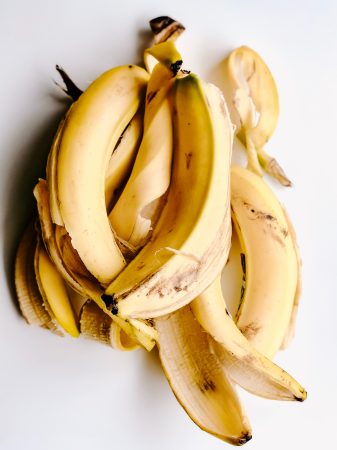14 ways to be greener
All it takes to start living more sustainably is one simple step, then another. Here’s your inspiration...

Go pre-loved
Have a favourite clothing brand? Set-up a saved search on platforms such as Facebook’s Marketplace and cut your fashion footprint by buying a lot more second-hand clothing.
ALSO SEE: Q&A with Joburg’s pre-loved fashion queen Tamsyn Jade
Make a mend
Care for what’s already in your wardrobe to extend its lifespan as much as possible. You don’t have to be a super-skilled sewer; ethical fashion activist Orsola de Castro recommends using vintage brooches to cover holes
Wash less
Good news! One of the easiest things you can do to help the environment is to simply wash your clothes less,’ declares Georgina Wilson-Powell in Is it Really Green? Everyday Eco-Dilemmas Answered. Levi’s suggests washing jeans after 10 wears, for example.
Read the manual
On the subject of domestic appliances: ‘It’s a good idea to read the instructions for your goods,’ advises Tessa Wardley, author of The Eco Hero Handbook: Simple Solutions to Tackle Eco-Anxiety. ‘There may be energy- and water-saving settings you’re unaware of.’
Don’t tumble
Another tip from Georgina is to ditch the tumble dryer. ‘It’s not just the earth you’ll be helping,’ she says. ‘Dryers are expensive to run.’ Plus line-drying means less wear and tear on clothes.
Find the refillables
Some supermarkets offer refill stations for household staples. Ask about such initiatives where you shop or search online to find your nearest dedicated refill store.

Pexels
Regular swaps
Your food shop is one of the easiest places to make eco-switches. Try one thing each week; for example, swap plastic bottles of cordial for glass or aluminium.
Electricity savvy
Making your home more eco-friendly doesn’t have to mean investing in expensive kit such as solar panels. Simple changes include wearing slippers to keep your feet warm during winter, or switching off the lights during the day.
Shorten the food chain
When it comes to the food you buy, the shorter the food chain, the less waste that was created before it reaches your kitchen. Try to buy 50% of your food grown within 50 km of where you live.
Sort your rubbish
Check out that local authority website again before you stick any less common objects in your rubbish bin. From ash to Zimmer frames, there may be a reuse or recycling scheme available.

Pexels
Try composting
Look into composting, either at home or through your local authority’s food-waste collection. This will massively reduce the amount you send to the landfill – and you may find you can then ditch bin bags too.
Use what you have first
Don’t ditch household items in favour of a greener alternative; only replace when you need to. It’s almost always more sustainable to maximise the use of what you own already. When you make the switch, do research online as to the most energy-efficient items.
Pass it on
Identify a recipient for anything still in good condition. Imagining the benefit that your favourite charity may gain from sales makes it a lot easier to resist the temptation to just chuck unwanted items in the bin.
Know your recycling
Your local authority is also a vital source of information about what you can and cannot recycle through kerbside collection. Check out its guidelines, as including prohibited items may mean that the whole batch has to be dumped.
ALSO SEE:
Wise up on paper recycling, from the bathroom to the kitchen sink
Feature Image: Pexels
The post 14 ways to be greener appeared first on Woman and Home Magazine.




